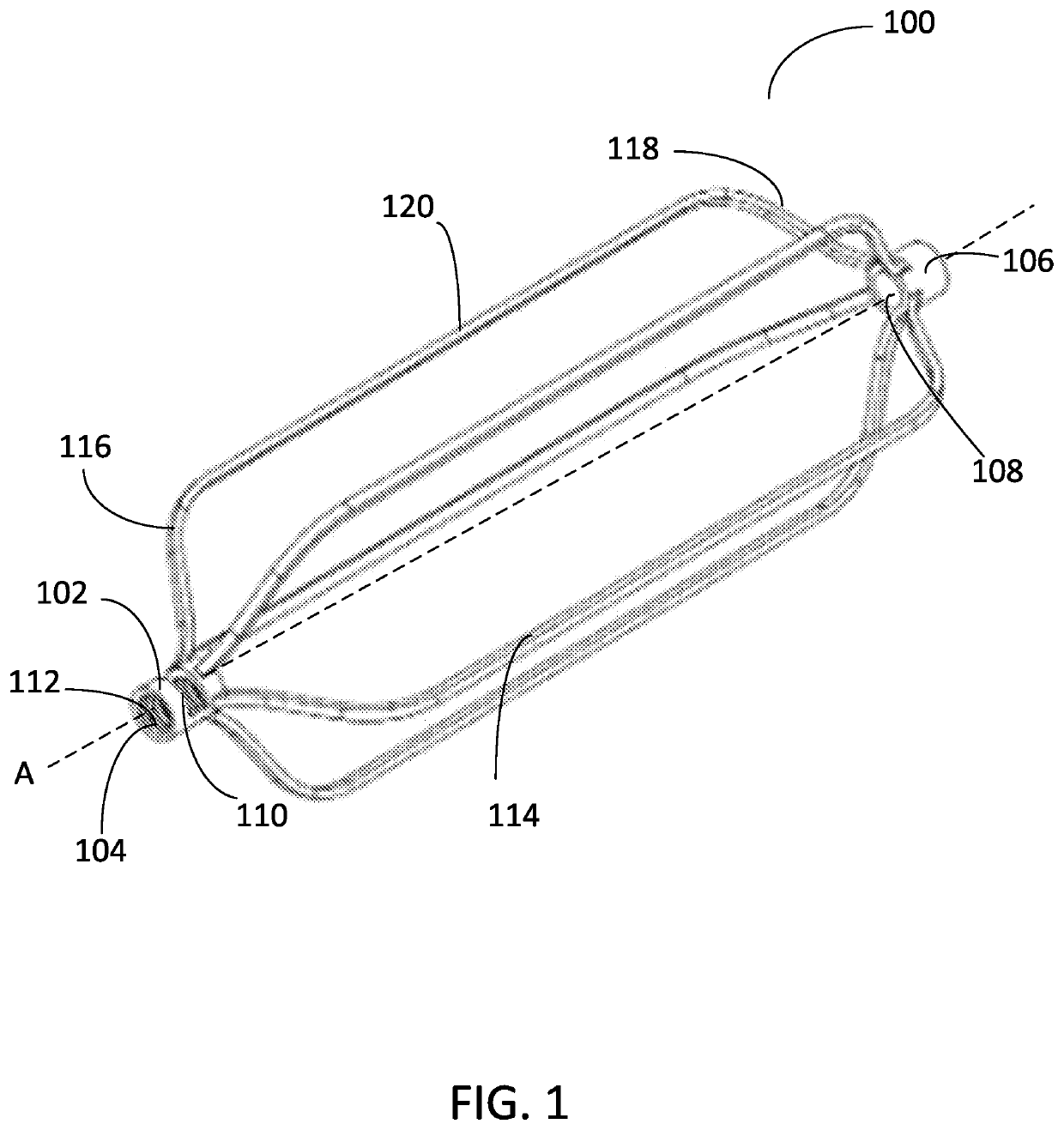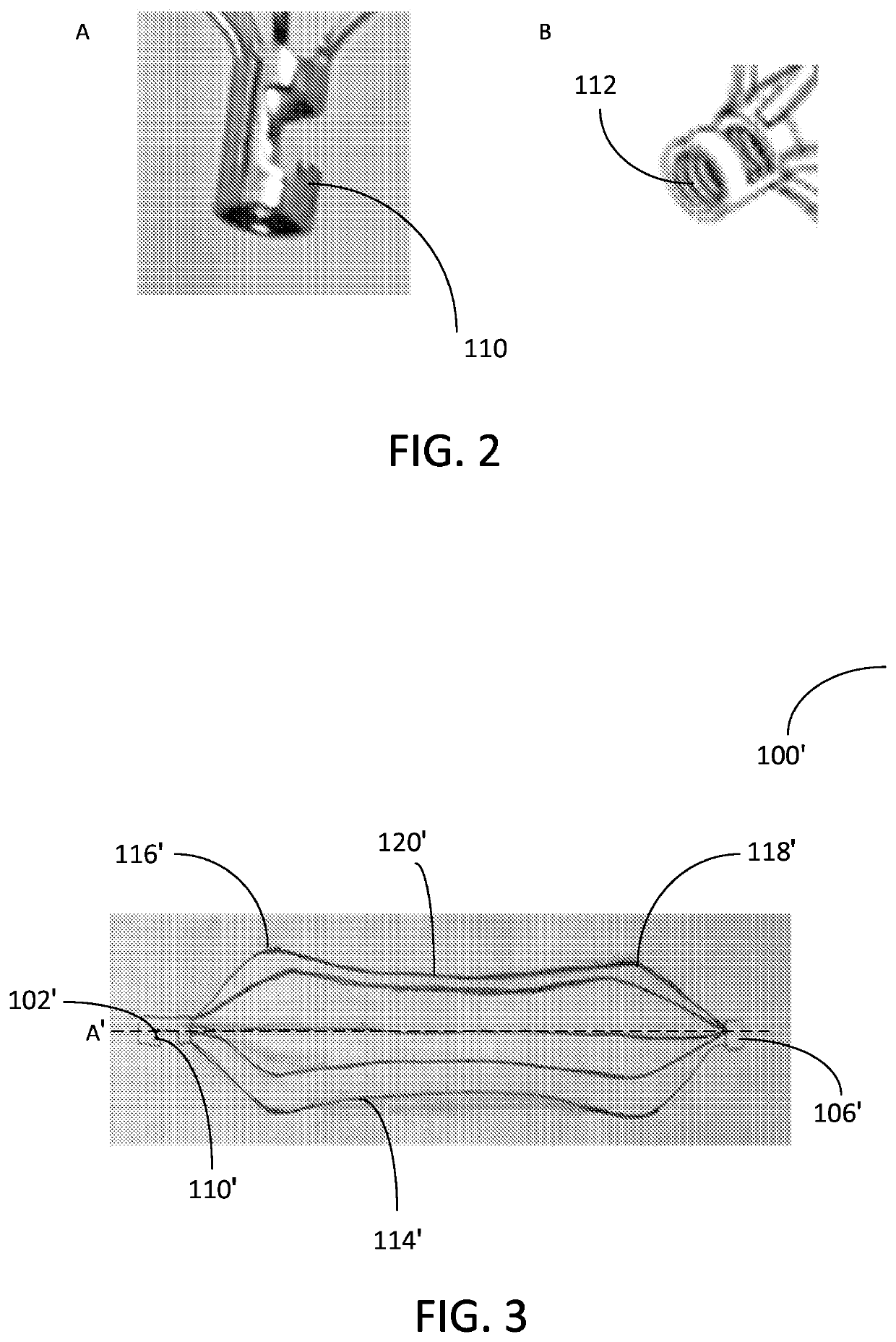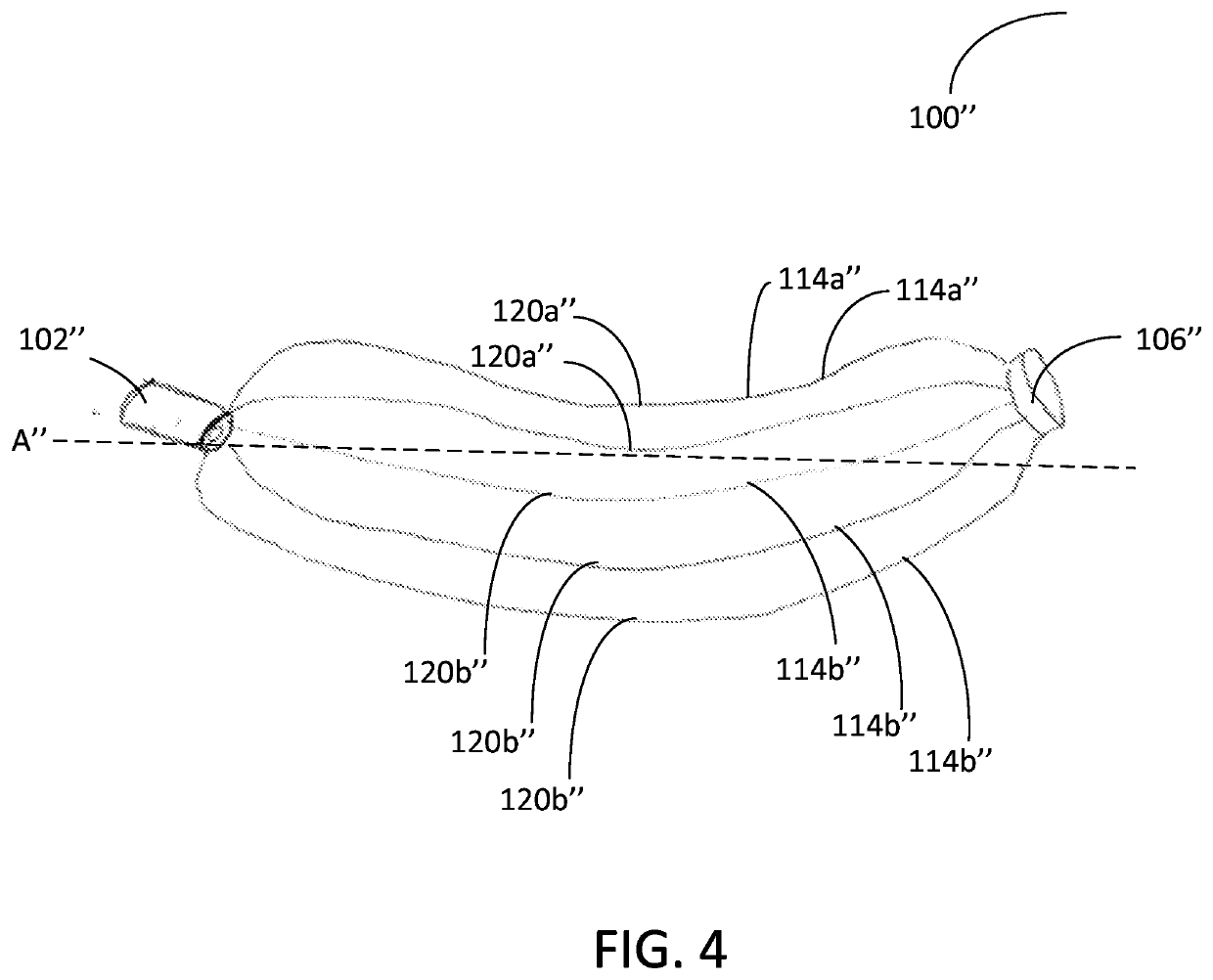Patent ductus arteriosus stent
a ductus arteriosus and stent technology, applied in the field of stents, can solve the problems of long-term complications, right ventricular failure, trauma to the vessels and surrounding structures, etc., and achieve the effects of preventing invagination, adequate blood flow, and adequate blood flow
- Summary
- Abstract
- Description
- Claims
- Application Information
AI Technical Summary
Benefits of technology
Problems solved by technology
Method used
Image
Examples
Embodiment Construction
[0018]The present disclosure relates generally to a stent configured to keep the ductus arteriosus open in a pediatric human patient. The ductus arteriosus is a unique blood vessel that typically closes naturally within 10 days after birth. In many forms of congenital heart disease, such as with cyanotic heart defects, it is critical to keep the ductus arteriosus open (i.e., patent) in order to ensure either adequate systemic or pulmonary blood flow, depending on the cardiac lesion. As used herein, the term “patent” is a medical term that refers to a structure that is generally open and / or unobstructed, and which is not substantially closed. Cyanotic heart defects are a type of congenital heart defect in which a patient appears blue (cyanotic) due to deoxygenated blood bypassing the lungs and entering the systemic circulation. Cyanotic heart defects include, but are not limited to, hypoplastic left heart syndrome (HLHS), Tetralogy of Fallot (ToF), total anomalous pulmonary venous co...
PUM
 Login to View More
Login to View More Abstract
Description
Claims
Application Information
 Login to View More
Login to View More - R&D
- Intellectual Property
- Life Sciences
- Materials
- Tech Scout
- Unparalleled Data Quality
- Higher Quality Content
- 60% Fewer Hallucinations
Browse by: Latest US Patents, China's latest patents, Technical Efficacy Thesaurus, Application Domain, Technology Topic, Popular Technical Reports.
© 2025 PatSnap. All rights reserved.Legal|Privacy policy|Modern Slavery Act Transparency Statement|Sitemap|About US| Contact US: help@patsnap.com



